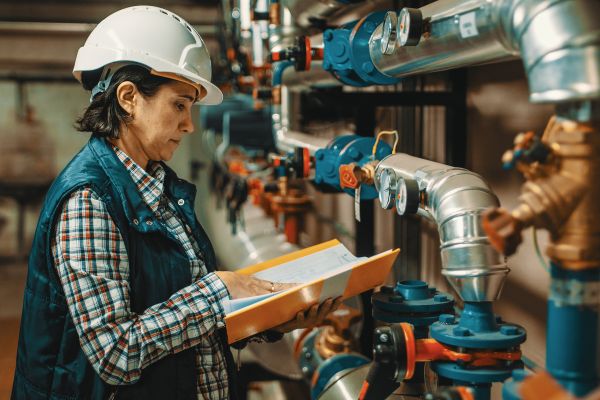Effective team building is crucial for fostering collaboration, boosting productivity, and creating a positive work environment. Implementing strategic approaches to team building can significantly enhance cohesion and performance within a group. Techniques for team building encompass a range of activities, communication frameworks, and leadership techniques aimed at developing strong interpersonal relationships among team members.
What is Team Building?
Team building is a process or set of activities designed to enhance the collective performance and effectiveness of a group of individuals working together as a team. The goal of team building is to improve communication, foster collaboration, build trust, and enhance the overall cohesion and synergy within the team. It involves a variety of structured activities, exercises, and initiatives that are tailored to address specific challenges or goals faced by the team.
What are the Techniques For Team Building?
Define Clear Goals and Objectives
Clearly outlining the team’s goals and individual roles establishes a roadmap for success. When everyone understands the larger mission and their specific contributions, it fosters a collective sense of purpose. Regularly revisit and communicate these goals to ensure alignment and motivation.
Encourage Open Communication
Open communication is the lifeblood of effective teamwork. Encourage team members to share ideas, thoughts, and concerns openly. Establishing a safe space for communication builds trust, enhances problem-solving, and ensures that everyone is on the same page.
Promote Team Bonding Activities
Team-building activities provide a platform for team members to interact outside their usual work settings. These activities can be as simple as icebreaker sessions during meetings, or more elaborate events such as team-building workshops, off-site retreats, or team-building games. The goal is to strengthen personal connections and build camaraderie.
Provide Professional Development Opportunities
Investing in the growth of team members not only benefits individuals but also contributes to the team’s overall skill set. Offer training sessions, workshops, or opportunities for skill-sharing within the team. This continuous learning fosters a culture of improvement and innovation.
Celebrate Achievements and Milestones
Recognizing and celebrating achievements, whether big or small, reinforces a positive team culture. Acknowledgement can be in the form of public praise, awards, or team-wide celebrations. Celebrations create a sense of accomplishment and motivation for future endeavors.
Establish Trust
Trust is fundamental to effective teamwork. Building trust involves being reliable, transparent, and consistent. Foster an environment where team members feel safe expressing their opinions and know that their contributions are valued. Trust enables smoother collaboration and conflict resolution.
Diversify Skill Sets
A well-rounded team benefits from a diversity of skills and perspectives. Encourage team members to develop and showcase their unique strengths. This diversity ensures that the team can approach challenges from various angles, fostering creativity and innovation.
Clarify Roles and Responsibilities
Ambiguity regarding roles and responsibilities can lead to confusion and conflicts. Clearly define and communicate each team member’s role, outlining expectations and deliverables. This clarity minimizes misunderstandings and helps team members collaborate more efficiently.
Foster a Positive Work Environment
Cultivate a workplace culture that emphasizes positivity, respect, and inclusivity. A positive environment encourages collaboration, creativity, and mutual support. Regular team-building activities and recognition programs contribute to a workplace where individuals feel valued and motivated.
Regularly Assess and Adjust
Team dynamics are dynamic, and regular assessment is crucial for continuous improvement. Conduct regular check-ins, gather feedback, and be open to making necessary adjustments. This iterative process ensures that the team remains adaptable and resilient in the face of changing circumstances.
How can we build and maintain trust among team members?
Open and Honest Communication
Transparent Dialogue
Encourage open communication where team members feel safe expressing their thoughts and opinions. Transparency builds credibility and helps prevent misunderstandings.
Active Listening
Foster a culture of active listening. When team members feel heard and understood, it strengthens the foundation of trust.
Consistency and Reliability
Consistent Behavior
Consistency in actions and decision-making is crucial. When team members can predict each other’s behaviors, trust is reinforced.
Reliability
Meeting commitments and deadlines establishes reliability. Consistently delivering on promises, no matter how small, builds confidence among team members.
Cultivate a Positive Work Environment
Supportive Culture
Foster a positive and supportive work environment. When team members feel valued and respected, they are more likely to trust one another.In a workplace assessment, the focus is on identifying and enhancing factors that contribute to a positive team culture.
Celebrating Successes
Recognize and celebrate both individual and team achievements. Positive reinforcement contributes to a culture of appreciation and trust.
Accountability
Taking Responsibility
Encourage team members to take responsibility for their actions and decisions. Acknowledging mistakes and learning from them contributes to a culture of accountability.
Shared Accountability
Emphasize that success and failure are collective responsibilities. When the team shares accountability, trust is strengthened.
Demonstrate Competence
Continuous Learning
Strive for personal and professional development. Team members who invest in their skills and knowledge demonstrate competence, earning the trust and respect of their peers.
Sharing Expertise
Encourage team members to share their expertise. Collaborative learning enhances the team’s overall competency and reinforces trust in each other’s abilities.
In conclusion, implementing effective team-building techniques is essential for cultivating a harmonious and productive workplace. Clear goal-setting, open communication, and recognizing individual strengths contribute to a cohesive team dynamic. Celebrating achievements, fostering trust, and promoting professional development enhance team morale. If you are resident of Texas or any other location, you can contact a professional corporate team building facilitator in Texas, they will provide expert solutions for improving team dynamics, communication, and overall effectiveness within an organization.





